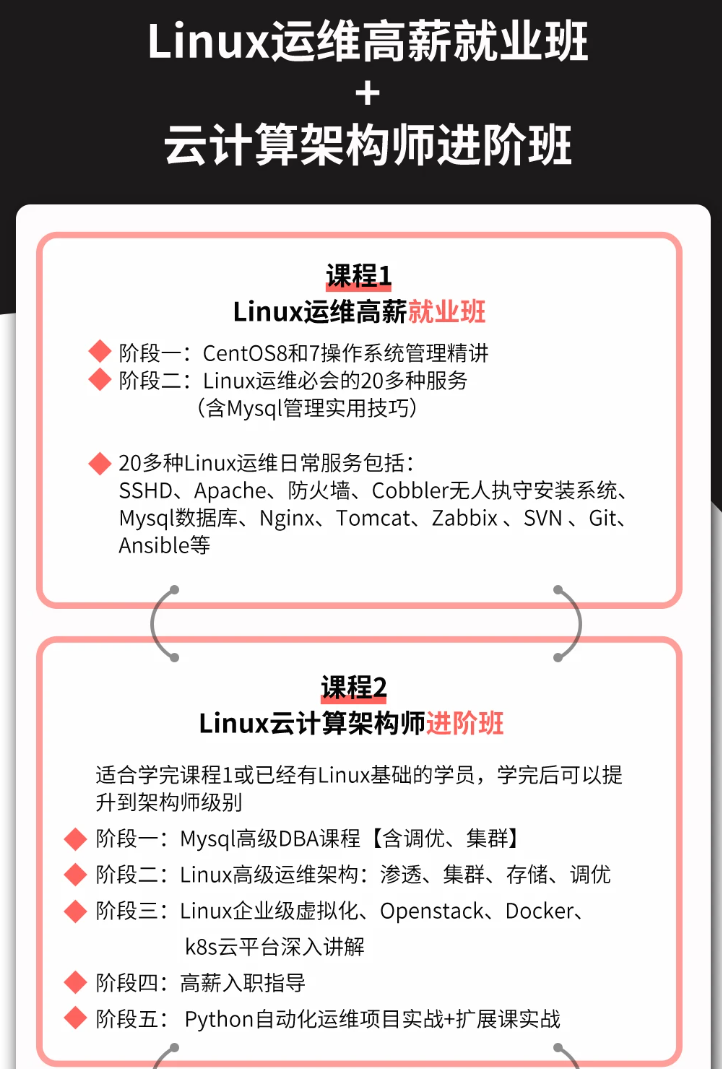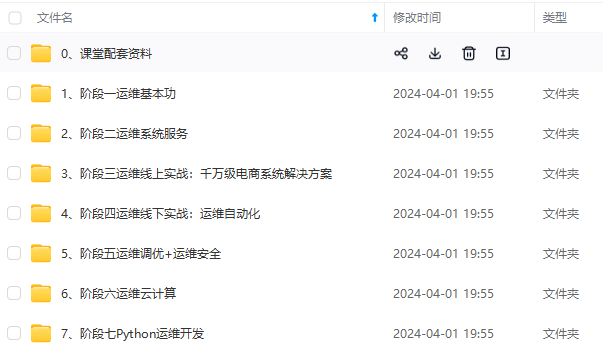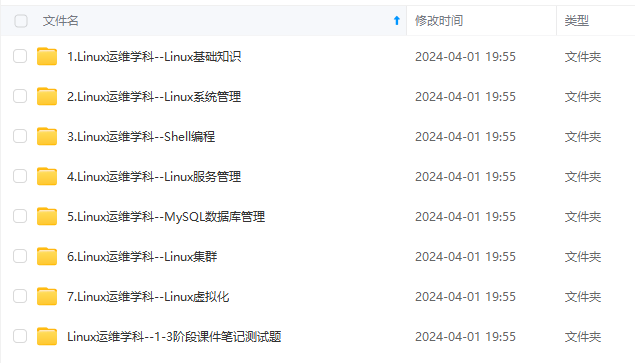网上学习资料一大堆,但如果学到的知识不成体系,遇到问题时只是浅尝辄止,不再深入研究,那么很难做到真正的技术提升。
一个人可以走的很快,但一群人才能走的更远!不论你是正从事IT行业的老鸟或是对IT行业感兴趣的新人,都欢迎加入我们的的圈子(技术交流、学习资源、职场吐槽、大厂内推、面试辅导),让我们一起学习成长!
Configuration conf = new Configuration();
conf.set("fs.defaultFS", "hdfs://localhost:9000");
FileSystem fs = FileSystem.get(conf);
Path inputPath = new Path("/input");
Path outputPath = new Path("/output");
if (fs.exists(outputPath)) {
fs.delete(outputPath, true);
}
3.2 作业配置实现
在配置MapReduce作业时,我们需要指定作业的输入、输出、Mapper类、Reducer类等信息。
Job job = Job.getInstance(conf, "max value");
job.setJarByClass(MaxValue.class);
job.setMapperClass(MaxValueMapper.class);
job.setCombinerClass(MaxValueReducer.class);
job.setReducerClass(MaxValueReducer.class);
job.setOutputKeyClass(IntWritable.class);
job.setOutputValueClass(IntWritable.class);
FileInputFormat.addInputPath(job, inputPath);
FileOutputFormat.setOutputPath(job, outputPath);
在配置作业时,我们需要通过Job类的getInstance方法来获取一个作业实例,并指定作业的名称和运行配置。在本问题中,我们可以指定作业名称为"max value"。通过setJarByClass方法来指定运行作业的类,即MaxValue类。通过setMapperClass、setCombinerClass和setReducerClass方法来指定Mapper、Combine和Reducer类。通过setOutputKeyClass和setOutputValueClass方法来指定输出键和值的类型。最后,通过FileInputFormat和FileOutputFormat类的addInputPath和setOutputPath方法来指定作业的输入和输出路径。
public class MaxValue {
public static void main(String[] args) throws Exception {
Configuration conf = new Configuration();
conf.set("fs.defaultFS", "hdfs://localhost:9000");
FileSystem fs = FileSystem.get(conf);
Path inputPath = new Path("/input");
Path outputPath = new Path("/output");
if (fs.exists(outputPath)) {
fs.delete(outputPath, true);
}
Job job = Job.getInstance(conf, "max value");
job.setJarByClass(MaxValue.class);
job.setMapperClass(MaxValueMapper.class);
job.setCombinerClass(MaxValueReducer.class);
job.setReducerClass(MaxValueReducer.class);
job.setOutputKeyClass(IntWritable.class);
job.setOutputValueClass(IntWritable.class);
FileInputFormat.addInputPath(job, inputPath);
FileOutputFormat.setOutputPath(job, outputPath);
boolean success = job.waitForCompletion(true);
if (success) {
System.out.println("Job completed successfully.");
}
}
}
在main函数中,我们首先创建一个Configuration对象,并设置默认文件系统为本地HDFS。然后,我们获取一个FileSystem对象,并指定输入和输出路径。在作业配置之后,我们通过调用waitForCompletion方法来等待作业运行完毕。最后,我们输出作业运行结果。如果作业运行成功,输出"Job completed successfully."。
3.3 Map过程的实现
public class MaxValueMapper extends Mapper<LongWritable, Text, IntWritable, IntWritable> {
private final IntWritable one = new IntWritable(1);
private IntWritable number = new IntWritable();
@Override
public void map(LongWritable key, Text value, Context context) throws IOException, InterruptedException {
String[] numbers = value.toString().split(",");
for (String s : numbers) {
number.set(Integer.parseInt(s));
context.write(one, number);
}
}
}
在Mapper类中,我们首先声明两个局部变量:一个IntWritable类型的one变量,用于作为键;一个IntWritable类型的number变量,用于作为值。在map函数中,我们首先将输入的一行文本转换为一个字符串数组,然后遍历该数组。对于数组中的每个元素,我们将其转换为一个整数,并将其赋值给number变量。接下来,我们将one作为键,number作为值,通过调用Context对象的write方法写入上下文。这样,Map函数就将每个输入数值作为值输出,而将固定的键1与每个数值组合。
在Reducer类中,我们同样首先声明一个局部变量,用于保存输入值的最大值。在reduce函数中,对于每个键值对,我们将值转换为一个整数,并与当前最大值进行比较。如果值大于当前最大值,则将该值赋值给最大值变量。最后,我们通过调用Context对象的write方法将最大值写入上下文。
public static class MaxReducer extends Reducer<IntWritable, IntWritable, IntWritable, IntWritable> {
private IntWritable result = new IntWritable();
public void reduce(IntWritable key, Iterable<IntWritable> values, Context context)
throws IOException, InterruptedException {
int max = Integer.MIN_VALUE;
for (IntWritable val : values) {
max = Math.max(max, val.get());
}
result.set(max);
context.write(key, result);
}
}
完整的代码如下:
import java.io.IOException;
import org.apache.hadoop.conf.Configuration;
import org.apache.hadoop.fs.Path;
import org.apache.hadoop.io.LongWritable;
import org.apache.hadoop.io.Text;
import org.apache.hadoop.mapreduce.Job;
import org.apache.hadoop.mapreduce.Mapper;
import org.apache.hadoop.mapreduce.Reducer;
import org.apache.hadoop.mapreduce.lib.input.TextInputFormat;
import org.apache.hadoop.mapreduce.lib.output.TextOutputFormat;
public class MaxValue {
public static class MaxValueMapper extends Mapper<LongWritable, Text, LongWritable, LongWritable> {
private LongWritable lineNumber = new LongWritable();
private LongWritable maxNumber = new LongWritable();
@Override
public void map(LongWritable key, Text value, Context context) throws IOException, InterruptedException {
String line = value.toString();
String[] numbers = line.split(",");
long max = Long.MIN_VALUE;
for (String number : numbers) {
long currentNumber = Long.parseLong(number.trim());
if (currentNumber > max) {
max = currentNumber;
}
}
lineNumber.set(key.get());
maxNumber.set(max);
context.write(lineNumber, maxNumber);
}
}
public static class MaxValueReducer extends Reducer<LongWritable, LongWritable, LongWritable, LongWritable> {
private LongWritable maxLineNumber = new LongWritable();
private LongWritable maxValue = new LongWritable(Long.MIN_VALUE);
@Override
public void reduce(LongWritable key, Iterable<LongWritable> values, Context context)
throws IOException, InterruptedException {
long localMax = Long.MIN_VALUE;
for (LongWritable value : values) {
long currentValue = value.get();
if (currentValue > localMax) {
localMax = currentValue;
}
}
if (localMax > maxValue.get()) {
maxValue.set(localMax);
maxLineNumber.set(key.get());
}
}
@Override
protected void cleanup(Context context) throws IOException, InterruptedException {
context.write(maxLineNumber, maxValue);
}
}
public static void main(String[] args) throws Exception {
Configuration conf = new Configuration();
Job job = Job.getInstance(conf, "Max Value");
job.setJarByClass(MaxValue.class);
job.setInputFormatClass(TextInputFormat.class);
job.setOutputFormatClass(TextOutputFormat.class);
job.setMapperClass(MaxValueMapper.class);
job.setReducerClass(MaxValueReducer.class);
job.setMapOutputKeyClass(LongWritable.class);
job.setMapOutputValueClass(LongWritable.class);
job.setOutputKeyClass(LongWritable.class);
job.setOutputValueClass(LongWritable.class);
TextInputFormat.addInputPath(job, new Path(args[0]));
TextOutputFormat.setOutputPath(job, new Path(args[1]));
System.exit(job.waitForCompletion(true) ? 0 : 1);
}
}
创建一个输入文件,其中每行包含一个或多个用逗号分隔的整数,例如:
1, 2, 3, 4, 5
6, 7, 8, 9, 10
11, 12, 13, 14, 15
该文件中包含三行整数,每行包含五个整数。我们的程序将读取该文件,并返回其中的最大值,即15。
接下来,我们可以在Eclipse中创建一个MapReduce项目,并将上述代码复制到项目中的相应文件中。在项目中,我们需要在项目的src/main/resources目录下创建一个名为input的文件夹,并将上述测试数据文件复制到该文件夹中。
现在我们可以运行程序。首先,我们需要将项目打包成JAR文件。在Eclipse中,我们可以右键单击项目,选择Export,然后选择JAR文件并按照向导的指示进行操作。将生成的JAR文件上传到Hadoop集群中,并使用以下命令在Hadoop集群上运行程序:
hadoop jar maxvalue.jar input output
其中,maxvalue.jar是我们生成的JAR文件,input是输入文件夹的路径,output是输出文件夹的路径。运行程序后,Hadoop将在输出文件夹中生成一个名为part-r-00000的文件,其中包含计算出的最大值。我们可以使用以下命令查看该文件中的结果:
hadoop fs -cat output/part-r-00000
该命令将输出键值对(key-value),最终的答案是14 15
先自我介绍一下,小编浙江大学毕业,去过华为、字节跳动等大厂,目前在阿里
深知大多数程序员,想要提升技能,往往是自己摸索成长,但自己不成体系的自学效果低效又漫长,而且极易碰到天花板技术停滞不前!
因此收集整理了一份《2024年最新Linux运维全套学习资料》,初衷也很简单,就是希望能够帮助到想自学提升又不知道该从何学起的朋友。





既有适合小白学习的零基础资料,也有适合3年以上经验的小伙伴深入学习提升的进阶课程,涵盖了95%以上运维知识点,真正体系化!
由于文件比较多,这里只是将部分目录截图出来,全套包含大厂面经、学习笔记、源码讲义、实战项目、大纲路线、讲解视频,并且后续会持续更新
外链图片转存中…(img-NaORuX7I-1715455242245)]
既有适合小白学习的零基础资料,也有适合3年以上经验的小伙伴深入学习提升的进阶课程,涵盖了95%以上运维知识点,真正体系化!
由于文件比较多,这里只是将部分目录截图出来,全套包含大厂面经、学习笔记、源码讲义、实战项目、大纲路线、讲解视频,并且后续会持续更新





















 1169
1169











 被折叠的 条评论
为什么被折叠?
被折叠的 条评论
为什么被折叠?








